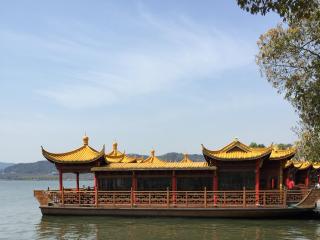China, a path to a global perspective
| Date: | 20 August 2015 |
| Author: | Bart-Jan van der Sleen |

Culture; the ideas, customs and social behaviour of a particular people or society. You can find different cultures within a village, a country and between the different continents and it’s impossible to say your own culture is best, because it is directly linked with your upbringing, education and norms and values. With this in mind I would like to share my first experience with eastern cultures and more specific the Chinese culture when I visited the Asia-Europa Foundation’s Rectors Conference on business-university partnerships.
The Asia-Europe Foundation (ASEF) is a cooperation between 51 country from both continents and aims to build bridges between them by sharing best-practices and giving insights in the different cultures. To realise these goals the ASEF organises Asia-Europe Meetings (ASEM) on different themes, one of which is Higher Education. This theme is discussed on the level of Ministers of Education, Rectors of universities and since 2012 on the level of students from different institution during the Student’s Forum, an initiative of the University of Groningen (UG) at the ASEM Rector’s Conference (ARC) in 2012 organized in Groningen. In March I had the opportunity to visit the 4th ARC in Hangzhou, China, a fascinating experience.
The UG is one of the most international universities in the Netherlands with collaborations all over the world and an increasing focus on Asia and more specific China. With the ambition to become a global university the UG sets itself apart from other Dutch universities. The goal is to give her students a truly global perspective and insights in different cultures, without losing touch with the local environment. The importance of this is widely discussed, but for me evident because of the globalisation of our education, research and more importantly the labour market, where we as students need to find our future career.
The importance of the use of business-university partnerships was the theme of the 4th ARC last March. How can universities collaborate with businesses without losing their unique identity? What are the challenges to form (inter-)national bonds with businesses? What conditions need to be created by policymakers? To answer these and more questions the different working groups formulated recommendations to the Minister’s Meeting. One of the most important recommendation was to break down barriers for interested students to go on exchange by making the visa regulations in the ASEF countries more flexible for those students. So students are more enabled to study and do research in a global environment.
It was a great opportunity for me to go to China, Hangzhou is described by an old Chinese saying, “In heaven there is paradise, and on earth there is Hangzhou”. The Westlake and surroundings are beautiful and a favourite holiday destination within China. In the street scene you see a lot of western companies, around many corners a Starbucks, a Carrefour and so on, but also a lot of Chinese companies of which I couldn’t read the names despite the fact I had nine hours on the plane to learn the language. In the four days I was in China I saw a lot of the local culture, people were friendly, welcoming and often riding around on their homemade electric scooters. In my opinion (future) collaborations with China are a great opportunity for bringing the different cultures closer together and sharing insights on the strengths and weaknesses of the different cultures. This should be the goal of academic partnerships and obviously should benefit the students, curious to experience new things. This is why the future endeavours of the University of Groningen in Yantai are so interesting. Besides the pioneering developments abroad the installation of a chair Chinese Language will be a step forward to give the students of Groningen a global perspective.

